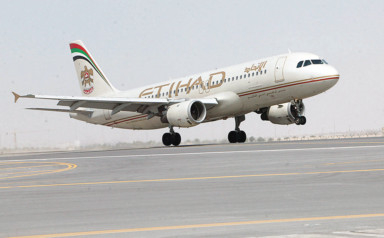Dubai: Etihad Airways reported on Wednesday it carried 18.5 million guests in 2016, a 6 per cent increase over the 17.4 million guests in 2015.
The figure, while higher year-on-year marks a slowdown in the growth rate compared to the 17 per cent increase in 2015 amid a “very tough business environment” in 2016, as described by James Hogan, president and chief executive officer of Etihad Aviation Group.
In a statement from Etihad, Hogan said, “2017 will be another challenging year. We will continue to expand prudently and efficiently, reflecting the nature of the economic environment.”
Hogan, who earlier announced he would step down from his position at Etihad in the second half of 2017, said he remains optimistic.
During 2016, the Abu Dhabi-based airline was part of the evolution of Etihad Aviation Group, a wider aviation and tourism business, which now also includes Etihad Airways Engineering, Airline Equity Partners, Etihad Airport Services, and Hala Group. The formation of Etihad Aviation Group was announced in May 2016. In terms of flights, Etihad Airways said it operated over 109,000 scheduled passenger and cargo flights spanning 112 destinations.
New aircraft
The airline also took delivery of 10 aircraft during the year including three Airbus A380s, five Boeing 787s, and two Boeing 777-200 cargo planes. An additional 12 aircraft are set for delivery this year, including nine Boeing 787s, two Airbus A380s, and one A330-200 freighter.
Meanwhile, Etihad’s codeshare and equity partnerships delivered 5.5 million passengers onto the airline’s flights – up 9 per cent over the five million passengers in 2015.
Etihad Cargo carried 592,700 tonnes, which was flat year-on-year. Etihad Cargo expanded its freighter services to markets that include Ohio, Copenhagen, Brussels, Addis Ababa, Casablanca, Colombo, Muscat, and Zhengzhou.
Last week, Etihad Aviation Group and Lufthansa German Airlines announced they signed a commercial partnership that includes a four-year $100 million catering agreement and another deal on maintenance, repair, and overhaul.
The airlines said they expect to sign on more partnerships, with a joint venture possibly being the next step. The two airlines are also looking into boosting cooperation in sectors like freight operations, procurement, and passenger services.










